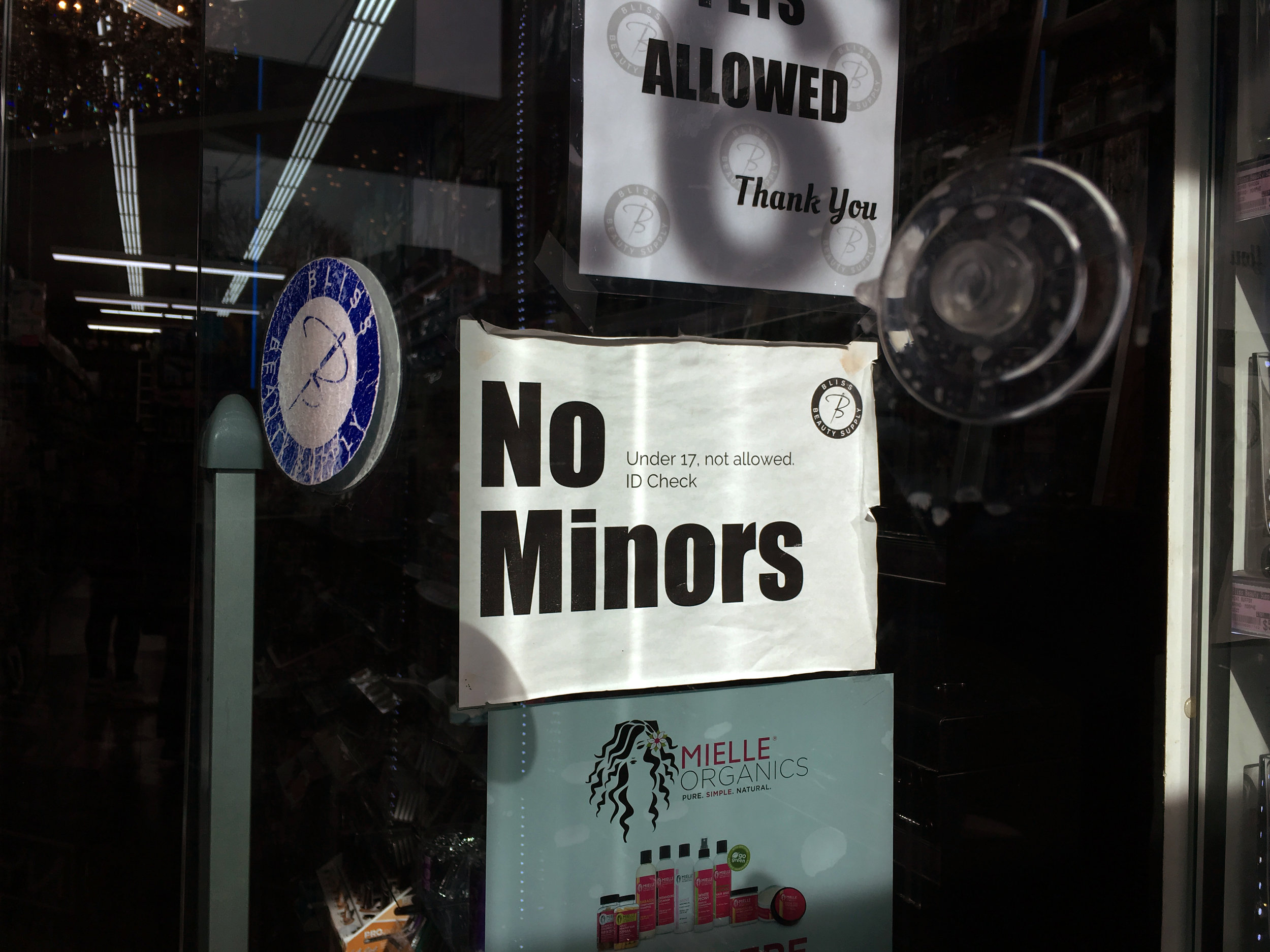Evidenced by these observations, there are several ways young people are made to feel unwelcome in cities. They include legal and regulatory methods, such as anti-loitering ordinances, youth curfews, no trespassing laws, noise rules, no skating/rollerblading laws, park closing times, dress-codes, parental escort policies, customer-only rules, and restaurant time limits; physical and functional constraints, such as lack of seating, defensive architecture like spikes on ledges and skate stoppers, lack of things to do, and auditory deterrents such as classical music or ultra-sonic sound; and social intimidations and obstacles such as family-enforced curfews, surveillance (especially in stores), catcalling, the cost of things, and bullying.
While most, if not all, teens can relate to experiencing at least one of these restrictions, the burden and consequences are most heavily felt by young people of color. Several of the Black and Latinx youth we interviewed described incidents in which they were followed in stores or were stopped and questioned by the police for their mere presence in public spaces or stores.
Added to this, young women, LGBTQIA youth, and young people with disabilities are also often the targets of other societal hostilities. Nearly every young woman we spoke to has a story about men harassing her on the street, and many LGBTQIA youth have been the victims of bullying.
When such restrictions are implemented through aggressive forms of zero-tolerance policing, the consequences can be devastating to both the mental and bodily well-being of youth. Since many of the spaces young people tend to hang out in are privately owned and managed, like clothing stores, fast food restaurants, and malls, teens are at the mercy of how these spaces enforce their policies, which can include security kicking out or detaining people who they consider to be disturbing other patrons or breaking the rules, or the police being called to handle the situation.
When it comes to our own apartment buildings, in not only public housing, but also in residential buildings whose landlords have signed up for “Operation Clean Halls,” the NYPD can regularly patrol hallways and stairwells to deter drug use and sales, and remove non-residents who are loitering, which can lead to confusion and possible escalation with young people who are just hanging out in these spaces.
Added to this, in New York’s public schools, School Safety Agents are considered NYPD officers who have the power to control a situation through physical force or arrest. This is what’s often called the School to Prison Pipeline. Also, minor infractions such as trespassing (which could even include being in a public park after it closes), can lead to a misdemeanor charge or worse.
Rather than keeping us safe, such approaches as broken-window policing increase the possibilities for teens to encounter the police, which can be emotionally traumatic, lead to physical confrontations, or potentially ignite a cycle of incarceration at an early age.
The limits cities, businesses, and individuals place on teens combined with the lack of spaces for young people to hang out and feel free can have a damaging effect on youth development. When society over-monitors and criminalizes teenagers, we are deprived of the ability to explore our identity, take risks, learn to self-manage, practice social skills, cultivate friendships, be creative, and exercise self-determination. Teenagers have a right to the city, and our criminalization is unjust and counter-productive. We aim to reframe loitering from something that is undesirable, to something that is good and activates a space.











